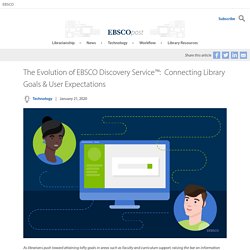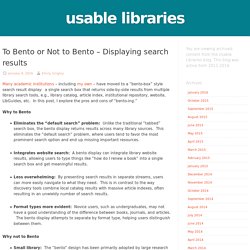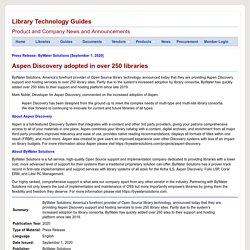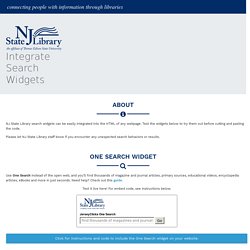

*Chapter 10: Search Strategies. *The Design of Browsing and Berrypicking Techniques (You've seen this before, please review the strategies Bates describes.) The classic model of information retrieval (IR) used in information science research for over twenty-five years can be characterized as follows (Compare Robertson [3], especially p. 129): This model has been very productive and has promoted our understanding of information retrieval in many ways. However, as Kuhn [4] noted, major models that are as central to a field as this one is, eventually begin to show inadequacies as testing leads to greater and greater understanding of the processes being studied. The limitations of the original model's representation of the phenomenon of interest become more and more evident. It is only fitting, then, that in recent years the above classic model has come under attack in various ways [5-8].
Oddy [9] and Belkin et al. [10] have asked why it is necessary for the searcher to find a way to represent the information need in a query understandable by the system. The model I am about to propose differs from the traditional one in four areas: 1. 2. 3. 4. *Dr. V's Strategies Poster. Discovery vs. Individual Databases Poster (Joyce Valenza) Beautiful and easy to use newsletters.

Log In Sign up now (it's free) Like You like this Share Tweet Pin it Embed. The Evolution of EBSCO Discovery Service™: Connecting Library Goals & User Expectations. As librarians push toward attaining lofty goals in areas such as faculty and curriculum support, raising the bar on information literacy, and continuing to enhance the impact that libraries have on student achievement, the key is to elevate the experiences that every user has with the library and its resources.

This means not only increased efficiency, but truly positive, successful interactions that lead to greater usage and overall library value. EBSCO is excited to unveil a series of enhancements, new capabilities and interface designs that will be delivered over the coming 12 months and beyond to improve users’ experiences. Taking an Evidence-Based Approach The evolution of EBSCO Discovery Service™ (EDS) and the specific roadmap have been developed with the fundamental approach of listening to customers, conducting user research and learning from data. Making it Easy on Librarians Components of the Evolution of EDS The evolution is underway. Some Final Thoughts These are exciting times.
Quint: Inside a Searchers Mind (Part 1) *Quint: Inside a Searcher's Mind (Part 2) Skim for classic strategies. Teaching Format as Process (Kevin Seeber) *Chapter 3. Search Systems and Finding Tools (Burke, LTR) skim. LMS Embedded Librarianship.

*Library Discovery Directions (Dempsey) *To Bento or Not to Bento – Displaying search results. Many academic institutions – including my own – have moved to a “bento-box” style search result display: a single search box that returns side-by-side results from multiple library search tools, e.g., library catalog, article index, institutional repository, website, LibGuides, etc.

In this post, I explore the pros and cons of “bento-ing.” Why to Bento Eliminates the “default search” problem: Unlike the traditional “tabbed” search box, the bento display returns results across many library sources. This eliminates the “default search” problem, where users tend to favor the most prominent search option and end up missing important resources. *Breeding: Index-Based Discovery Services: Current Market Positions and Trends, Vol 54, No 8 (2018) Discovery and the Disciplines: An Inquiry into the Role of Subject Databases through Citation Analysis. Aspen Discovery adopted in over 250 libraries. ByWater Solutions, America's forefront provider of Open Source library technology, announced today that they are providing Aspen Discovery support and hosting services to over 250 library sites.

Partly due to the system's increased adoption by library consortia, ByWater has quickly added over 250 sites to their support and hosting platform since late 2019. Mark Noble, Developer for Aspen Discovery, commented on the increased adoption of Aspen: Library Technology Reports: Discovery Products (Marshall Breeding) skim. Implementing a Bento-Style Search in LibGuides v2. By Aaron Tay and Feng Yikang Introduction Like many university libraries, the National University of Singapore (NUS) Libraries provides online guides, which are created to increase exposure and use of library resources.

They are starting points for research, with links to scholarly journals and specialized sources relating to topics and subjects. NUS Libraries has offered guides since 2007 and, in 2010, subscribed to SpringShare’s content management system, LibGuides. NUS Libraries’ LibGuides instance contains guides for subjects, modules, library instruction, research tools and more, with content contributed by librarians.
LibGuides as Research Portal In 2013, we began preparing for a migration to version 2 of LibGuides. The idea was to design a LibGuides homepage that served as an alternative home for research-oriented users. Hence, we designed a complete facelift for the LibGuides home page that would encourage browsing for such research-based services (Figure 1). What about searching? Discovery Search and Analysis Updates. Breitbach Web scale discovery. Rethinking Facet Headings in a Discovery Service.
ProQuest One Academic. ProQuest Discovery Services. Aspen Discovery (Open Source) Aspen is a full-featured Discovery System that integrates with e-content and other 3rd party providers, giving your patrons comprehensive access to all of your materials in one place.

Aspen combines your library catalog with e-content, digital archives and enrichment from all major third party providers, improves relevancy and ease of use, provides native reading recommendations, displays all formats of titles within one result (FRBR) and much more. Aspen was created to give users an improved experience over other Discovery systems with less of an impact on library budgets. Aspen Discovery has been built with 4 main goals in mind. Libraries have a wealth of information accessible to patrons, but a lot of this information is often very difficult to find.
EBSCO Information Services. New Resources for Chinese Studies and More Post by Rachel Freeman Posted on May 25, 2017 in EBSCO Discovery Service With EBSCO Discovery Service™ (EDS), the highest quality information resources are at your fingertips.

To improve your EDS experience, new content is regularly made available from the world's top publishers Read More » *EBSCO Discovery Service - Tutorial. Stacks Powered. BiblioCommons. New Jersey Clicks - Search Widgets FAQ and Training. NJ State Library Search Widgets. Use One Search instead of the open web, and you’ll find thousands of magazine and journal articles, primary sources, educational videos, encyclopedia articles, eBooks and more in just seconds.

Need help? Check out this guide. Test it live here! For embed code, see instructions below. To include the One Search widget on your website: Copy the code below and paste into your website. Summon Searching Beyond the Basics. Summon Basic Search. Ex Libris Primo - Empowering Libraries to Shape the Discovery Experience. Getting Started - Primo / Library One Search - LibGuides at Arizona State University. WorldCat Discovery. VuFind - Search. Discover. Share. Project Blacklight.